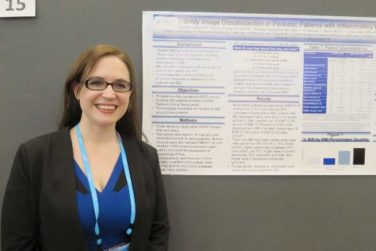Compared with standard clinical follow-up, routine imaging of asymptomatic patients during the first 2 years following treatment for diffuse large B-cell lymphoma (DLBCL) is not cost effective, based on estimates from a decision-analytic Markov model published in the Journal of Clinical Oncology.
The model compared three surveillance strategies: clinical follow-up with no imaging, with biannual computed tomography (CT), and with biannual positron emission tomography (PET)/CT. Scans produced minimal survival benefit, with 0.03 life years gained by CT and 0.04 years by PET/CT. The associated incremental cost effectiveness ratio (ICER) for CT was $164,960/quality-adjusted life year (QALY), and $168,750/QALY for PET/CT (J. Clin. Oncol. 2015 Mar. 30 [doi:10.1200/JCO.2014.58.5729]).
Routine CT imaging in asymptomatic DLBCL patients during the first 2 years, in accordance with NCCN guidelines, offers little clinical utility at substantial costs, noted Dr. Scott Huntington of the University of Pennsylvania, and his associates. “Adopting the approach of not routinely imaging asymptomatic patients following a complete remission would reduce costs and is unlikely to adversely impact clinical outcomes,” they wrote.
To construct the decision-analytic Markov model, the researchers used data from prospective randomized controlled clinical trials, including the Collaborative Trial in Relapsed Aggressive Lymphoma (CORAL) trial. For cost estimates, the model incorporated the 2013 Medicare fee schedule. The prices encountered by patients on private insurance would likely be higher, making the ICERs even higher than reported.
The model used a relapse risk of 20% during 5 years; for some cases with higher risk, such as patients with multiple protein rearrangements (double hit), relapse rates may be higher. In higher-risk clinical scenarios, imaging strategies are associated with favorable ICERs; increasing the risk to 35% during the first 2 years drops the estimated ICER to less than $50,000/QALY. However, prospective randomized trials are needed to confirm clinical benefit of imaging surveillance for high risk patients.
The model also assumes that earlier detection and treatment of asymptomatic relapse leads to improved outcomes. However, improved outcomes may result from lead-time bias. Less aggressive lymphoma may be more likely asymptomatic and detected by routine surveillance, but improved outcomes might stem more from favorable cancer biology than earlier detection and treatment.
In addition to marginal clinical benefit and high incremental costs, CT imaging is also associated with high patient anxiety and potential carcinogenic effects of ionizing radiation, noted Dr. Huntington and colleagues. Both the American Society of Hematology and the American Society of Clinical Oncology Choosing Wisely Campaigns favor limits to surveillance imaging, they added.
“We hope our results add to the momentum of the Choosing Wisely Campaign and further reduce routine surveillance imaging of asymptomatic patents with DLBCL in remission,” the authors wrote.




